18 Street Foods That Capture the Essence of a Culture

Street food offers a window into the heart and soul of a culture, reflecting its history, values, and tastes. From bustling markets in Bangkok to quiet street corners in Morocco, these foods tell a story. Their flavors, ingredients, and cooking methods are as diverse as the cultures they come from. This blog post explores 18 diverse street foods from around the world, ranging from the traditional to the imaginative, all while adhering to dietary guidelines suitable for a diverse audience.
1. Thai Mango Sticky Rice

Thai Mango Sticky Rice is a classic dessert found on the streets of Thailand. It combines glutinous rice with sweet coconut milk, topped with ripe mango slices. The contrast between the creamy rice and the juicy mango makes a delightful harmony of flavors. This dish is typically served as a sweet treat during the warmer months when mangoes are in season. Vendors often serve it on banana leaves, adding to its exotic appeal. Its simplicity and rich flavor make it a favorite among both locals and tourists. The preparation involves soaking the rice, steaming it, and then mixing it with coconut milk and sugar. The mangoes are peeled and sliced just before serving. This ensures the freshness and sweetness of the fruit. Mango Sticky Rice is not only a treat but also a visual delight with its diverse colors.
2. Japanese Takoyaki
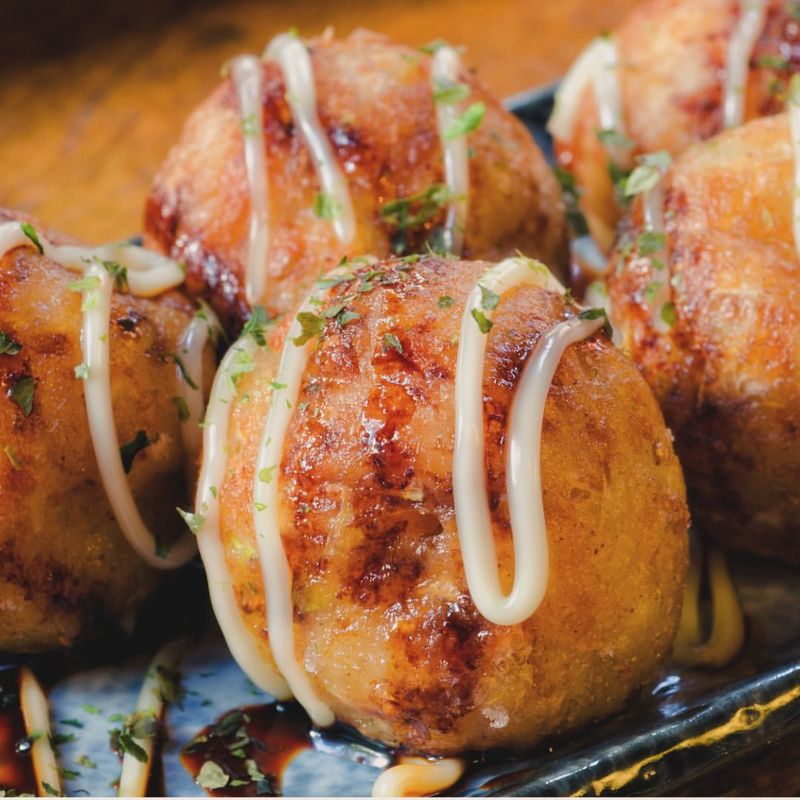
Takoyaki is a beloved Japanese street food originating from Osaka. These savory ball-shaped snacks are made of a wheat flour-based batter and filled with diced octopus, tempura scraps, pickled ginger, and green onions. Cooked in a special molded pan, Takoyaki are brushed with takoyaki sauce and mayonnaise, then sprinkled with bonito flakes and seaweed. They are a popular snack at street stalls throughout Japan. The preparation involves quick and careful flipping of the batter in the pan, ensuring a crisp exterior and gooey interior. The experience of eating Takoyaki is as much about the texture as it is about the flavor. The smoky, savory taste combined with the creamy sauces makes it irresistible. These bite-sized delights are often served piping hot, adding an element of excitement to their consumption.
3. Indian Masala Chai

Masala Chai is a spiced tea that has become synonymous with Indian street food culture. It is made by boiling black tea with a blend of aromatic spices and herbs, such as cardamom, cinnamon, ginger, and cloves. Milk and sugar are added to balance the strong flavors of the spices. This warm, comforting beverage is typically served in small clay cups, enhancing its earthy taste. Vendors often brew it in large kettles, filling the air with its enticing aroma. Masala Chai is enjoyed throughout the day, providing a caffeine boost and warmth. Each region in India may have its unique blend of spices, reflecting local tastes and preferences. This tea is more than just a drink; it’s an experience that engages the senses, offering a taste of India’s rich culinary heritage.
4. Egyptian Koshari
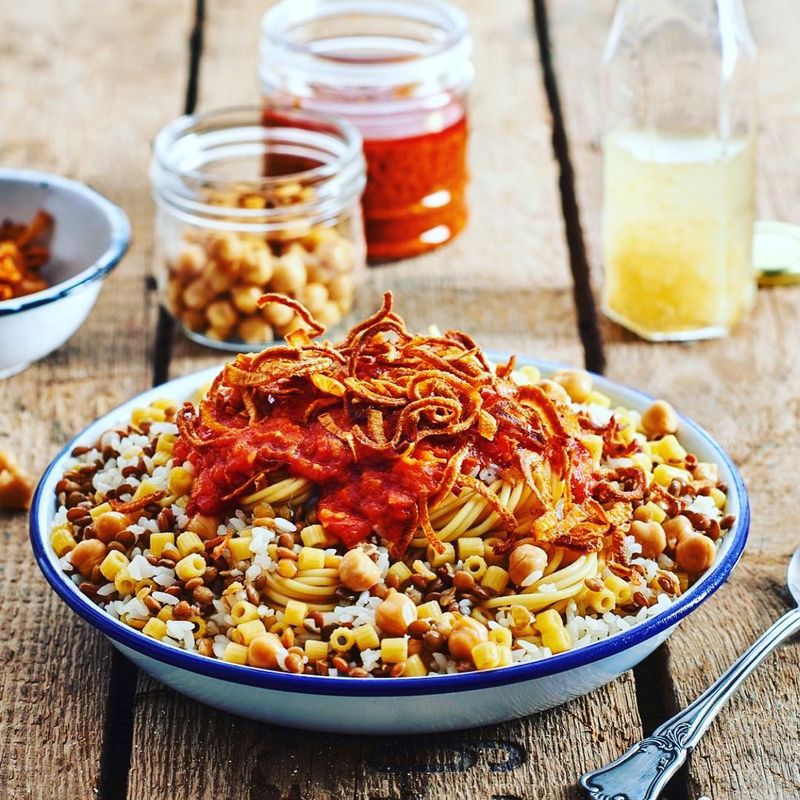
Koshari is a hearty Egyptian street food that brings together various textures and flavors. It’s a mix of rice, lentils, and macaroni, topped with chickpeas, crispy fried onions, and drizzled with a spicy tomato sauce. This vegetarian dish is a staple in Egyptian food culture, often sold at food carts and small local restaurants. Preparing Koshari involves cooking each component separately before assembling them in layers, allowing each flavor to stand out. The spicy tomato sauce adds a tangy kick, while the fried onions provide a satisfying crunch. Koshari is both filling and nutritious, making it a favorite among locals looking for a quick and affordable meal. The combination of grains and legumes offers a complete protein source, catering to both vegetarians and those looking to try something unique. Koshari is not just a meal but a symbol of Egyptian street food innovation and history.
5. Turkish Simit
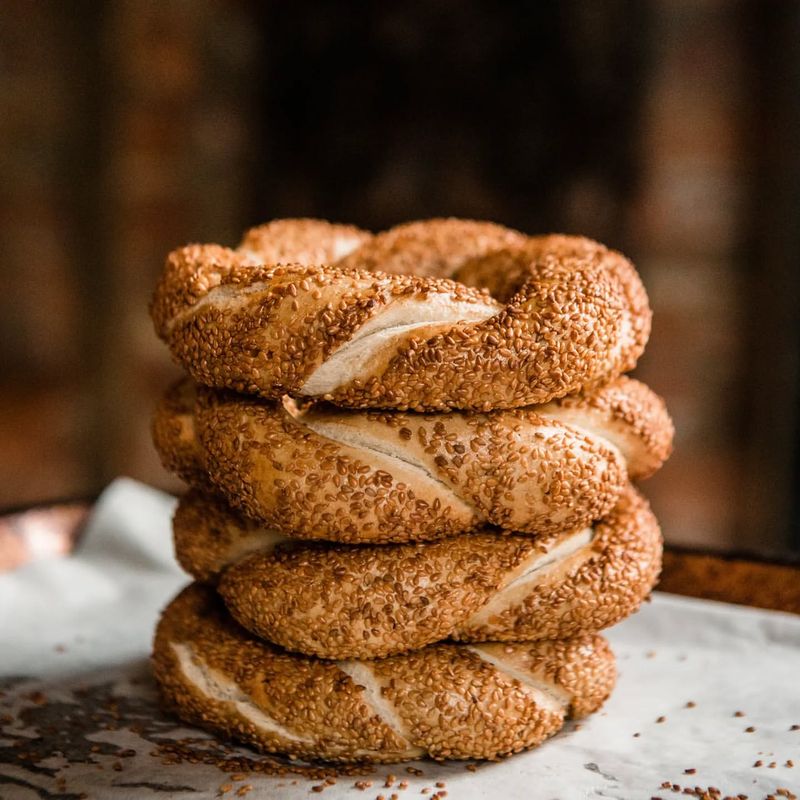
Simit, often referred to as the Turkish bagel, is a popular street food in Turkey. It’s a circular bread encrusted with sesame seeds, known for its crunchy exterior and soft interior. Simit is often enjoyed as a quick breakfast or snack, sometimes accompanied by cheese, olives, or jam. Vendors sell Simit from wheeled carts or in small shops, offering a convenient and tasty option for people on the go. The bread’s unique texture comes from dipping the dough in molasses and then coating it with sesame seeds before baking. This process gives Simit its distinct flavor and appeal. Whether eaten plain or with accompaniments, Simit offers a satisfying bite that’s both simple and flavorful. Its presence on the streets of Istanbul and beyond speaks to its integral role in Turkish culinary traditions.
6. Moroccan Msemmen

Msemmen is a traditional Moroccan flatbread known for its flaky, layered texture. Made from flour, semolina, yeast, salt, and butter, it’s a versatile street food that can be enjoyed sweet or savory. Msemmen is often served with honey and butter or filled with meat and spices. The preparation of Msemmen involves folding and layering the dough multiple times, making its characteristic flaky layers. It is then cooked on a hot griddle until golden brown and crispy. This process requires skill and patience, but the result is a delectable bread that can be eaten at any time of the day. Msemmen is a staple in Moroccan markets and streets, offering a taste of home-cooked comfort in a portable form. Its rich texture and adaptability to various flavors make it a beloved choice among locals and visitors alike.
7. Lebanese Manakish

Manakish is a popular Lebanese flatbread similar to pizza, commonly enjoyed as a breakfast or snack. Topped with ingredients like za’atar, cheese, or minced meat, Manakish provides a delightful combination of flavors. The dough is rolled flat, topped, and then baked in a stone oven, giving it a unique texture and taste. In Lebanon, Manakish is often made to order, ensuring freshness and quality. The use of za’atar, a blend of thyme, sesame seeds, and sumac, gives the flatbread its iconic flavor profile. Cheese-topped Manakish is also highly favored for its rich, creamy taste. This versatile street food is excellent for sharing, making it a communal experience. Whether enjoyed in a bustling bakery or purchased from a street vendor, Manakish offers a glimpse into Lebanese culinary traditions.
8. Indonesian Satay
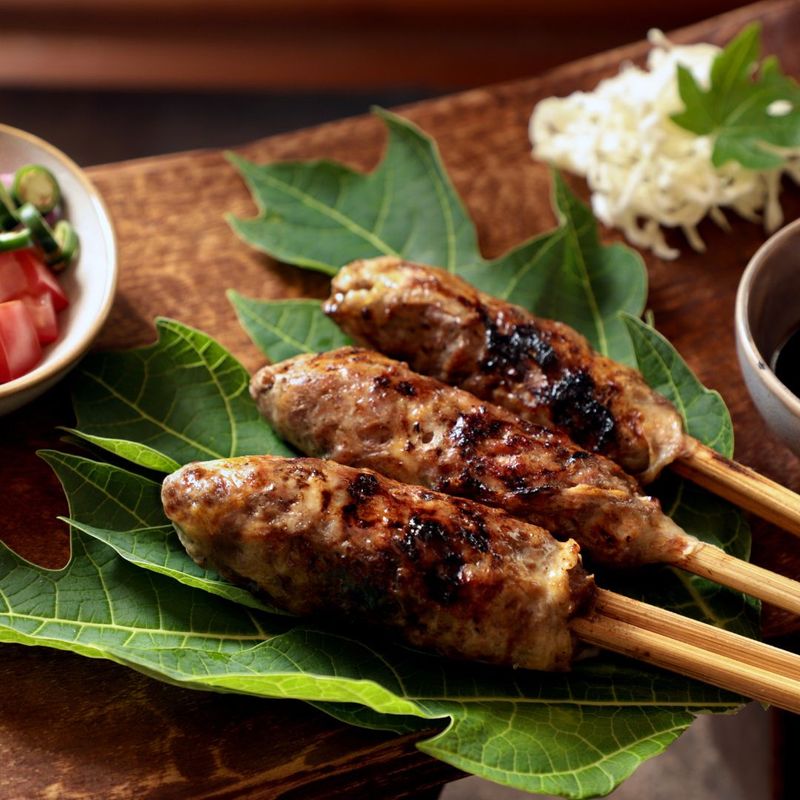
Indonesian Satay is a popular street food consisting of skewered and grilled meat, often served with a savory peanut sauce. Chicken, beef, or lamb are commonly used, marinated in a mixture of turmeric, coriander, and other spices. The skewers are grilled over an open flame, imparting a smoky flavor. Satay is often accompanied by lontong (rice cakes) and a side of peanut sauce, enhancing its rich taste. Vendors typically prepare Satay fresh, allowing customers to enjoy the fragrant aroma as the meat cooks. This tasty dish is excellent for quick snacks or satisfying meals. The combination of succulent meat and flavorful sauce makes Satay a beloved choice among street food enthusiasts. Its presence in markets highlights its cultural significance and universal appeal.
9. Pakistani Golgappa
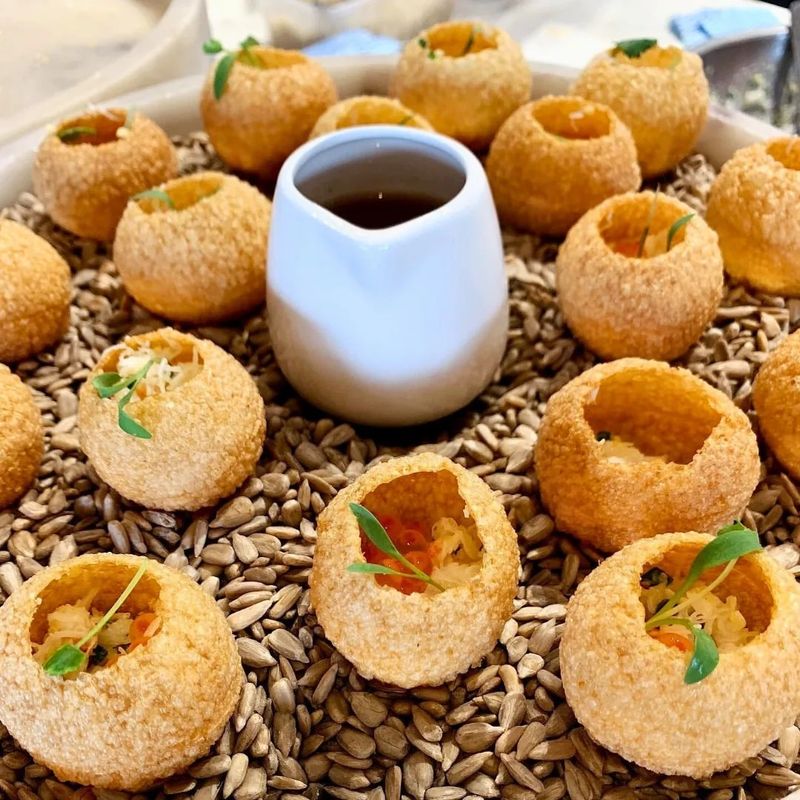
Golgappa, known as Pani Puri in some regions, is a famous Pakistani street food with its spicy and tangy flavors. It consists of crispy, hollow spheres called puris, filled with flavored water, chickpeas, potatoes, and spices. Each bite offers a burst of flavor, making it a favorite among locals. The preparation involves making the puris from semolina or wheat flour, which are then deep-fried to achieve a crispy texture. The filling is a mixture of boiled chickpeas and potatoes, flavored with tamarind chutney and spices. The flavored water, often made with mint, tamarind, and spices, adds a refreshing touch. Golgappa is not just a snack but an experience, as it is often enjoyed in groups, with people challenging each other to eat as many as possible. Its taste and interactive eating style make it a highlight of Pakistani street food culture.
10. Nigerian Suya
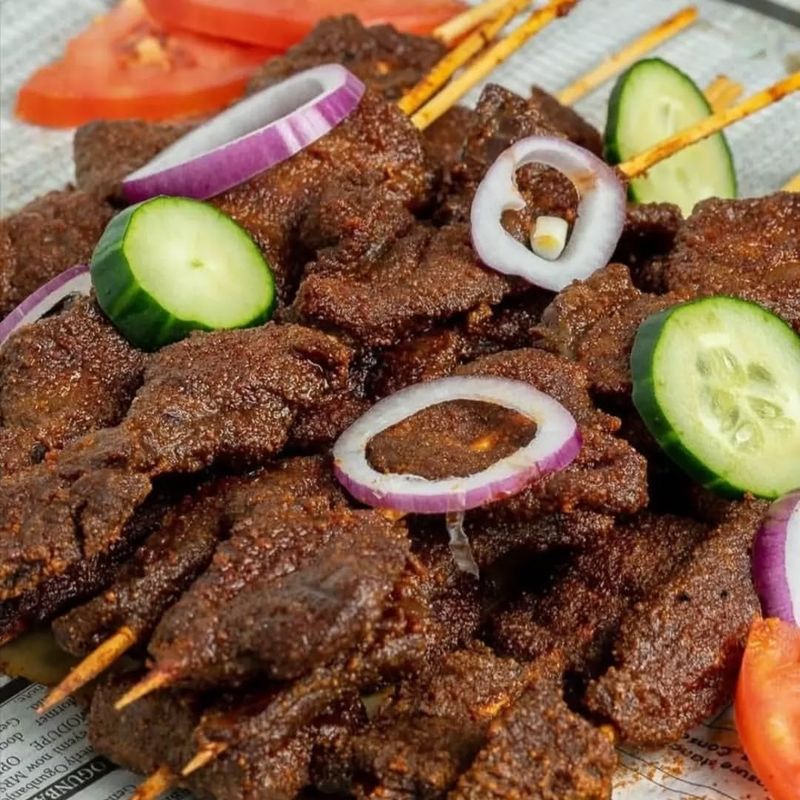
Suya is a popular Nigerian street food made of skewered meat, typically beef or chicken, marinated in a spicy peanut paste. It’s grilled over an open flame, offering a smoky and flavorful taste. Suya is often served with slices of onion, tomato, and spicy pepper sauce. The preparation of Suya involves marinating the meat in a mixture of ground peanuts, cayenne pepper, ginger, and other spices. This gives it a distinctive flavor and aroma. Grilling the skewers over an open flame enhances the meat’s taste, making it a favorite among those who enjoy bold flavors. Suya is a social food, often enjoyed with friends and family at street stalls and gatherings. Its spicy kick and rich taste make it a beloved part of Nigerian food culture, offering a taste of the country’s culinary traditions.
11. Peruvian Anticuchos
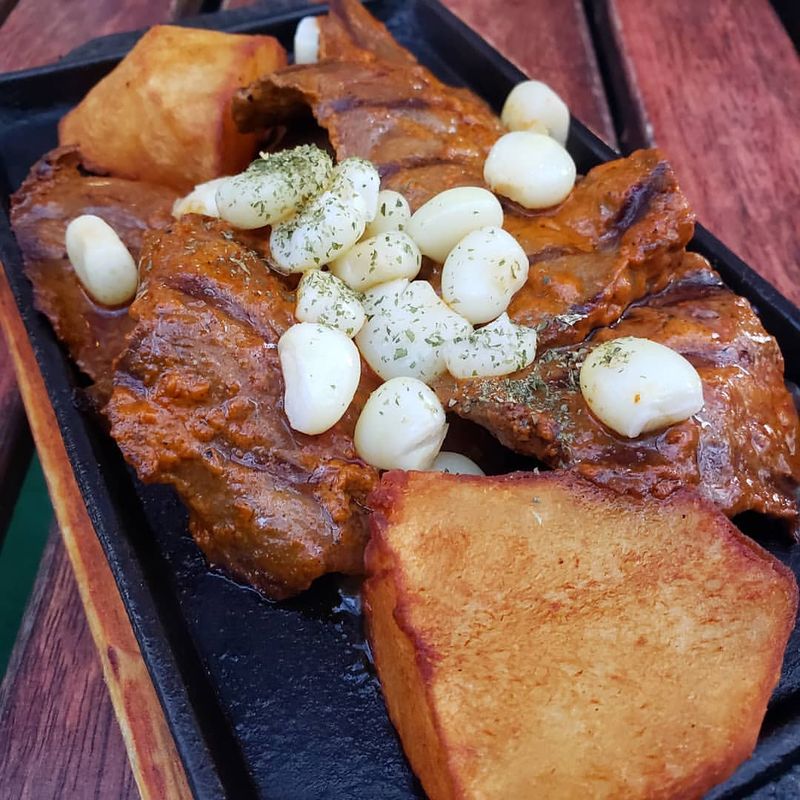
Anticuchos are a traditional Peruvian street food, consisting of skewered and grilled beef heart. Marinated in vinegar and spices such as cumin, garlic, and aji pepper, these skewers offer a unique and flavorful experience. Anticuchos are often served with boiled potatoes and a spicy aji sauce. The preparation of Anticuchos involves cutting the beef heart into pieces and marinating them overnight to absorb the flavors. Grilling the skewers over charcoal gives them a smoky taste and tender texture. This dish is a popular choice at street and markets across Peru. Anticuchos are not just a culinary delight but also a cultural symbol, reflecting Peru’s rich history and diverse influences. The bold flavors and unique ingredients make Anticuchos a must-try for anyone exploring Peruvian street food.
12. Palestinian Falafel
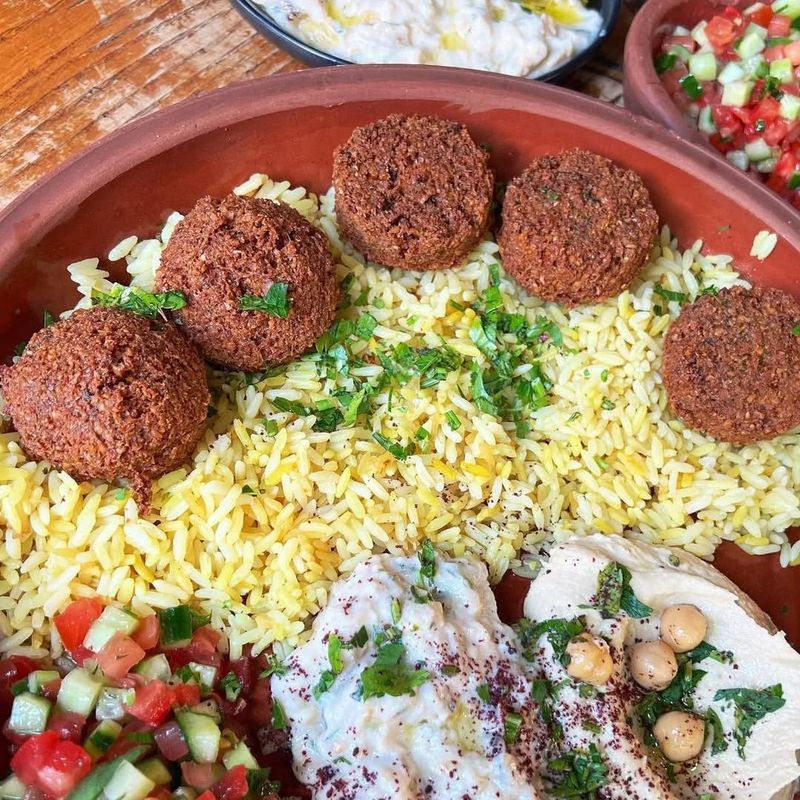
Falafel is a beloved Palestinian street food made from ground chickpeas or fava beans mixed with herbs and spices. The mixture is formed into balls or patties and deep-fried until crispy. Falafel is typically served in pita bread, accompanied by tahini sauce, vegetables, and pickles. The preparation of Falafel requires soaking the chickpeas before grinding them with ingredients such as parsley, cilantro, garlic, and cumin. This mixture is shaped and fried, resulting in a crunchy exterior and flavorful interior. Falafel is enjoyed as a snack or meal, providing a satisfying vegetarian option. Its popularity extends beyond Palestine, reflecting its appeal and versatility. Falafel’s rich taste and convenience make it a staple in street food markets, offering a taste of Middle Eastern culinary traditions.
13. Mexican Elote
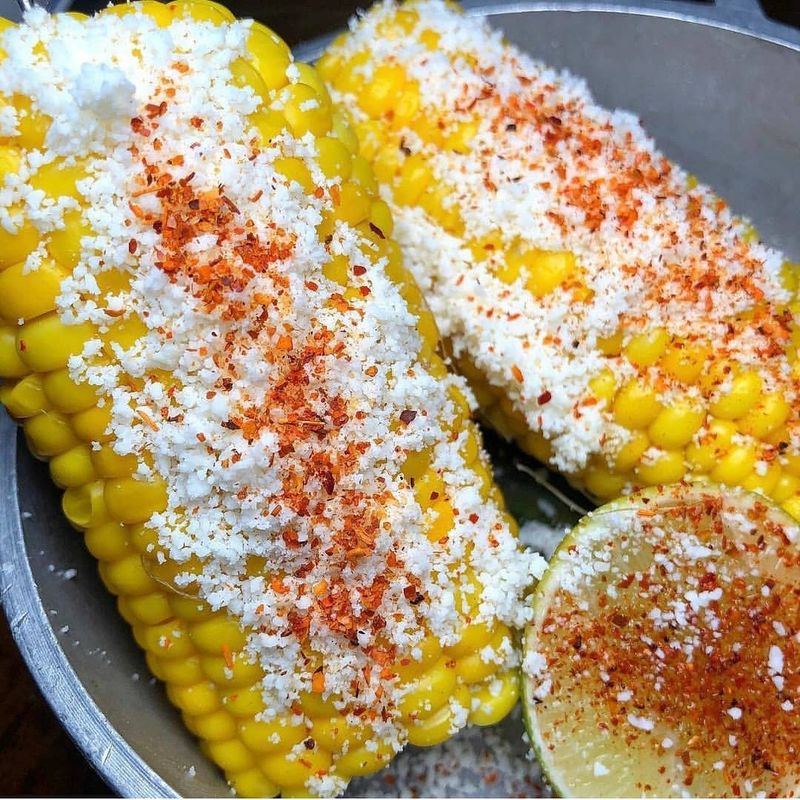
Elote is a Mexican street food favorite, consisting of grilled corn on the cob slathered with mayonnaise, cheese, lime, and chili powder. This savory treat is a staple at fairs, markets, and street corners throughout Mexico, offering a blend of flavors and textures. The preparation of Elote involves grilling the corn until it’s slightly charred, enhancing its natural sweetness. The toppings are then applied, making a creamy and spicy combination that’s hard to resist. Each bite offers a burst of flavor, from the tangy lime to the spicy chili. Elote is more than just corn; it’s a cultural experience that brings people together. Whether enjoyed as a snack or side dish, its bold taste and simple preparation make it a beloved choice among locals and visitors alike, capturing the essence of Mexican street food.
14. Bangladeshi Fuchka
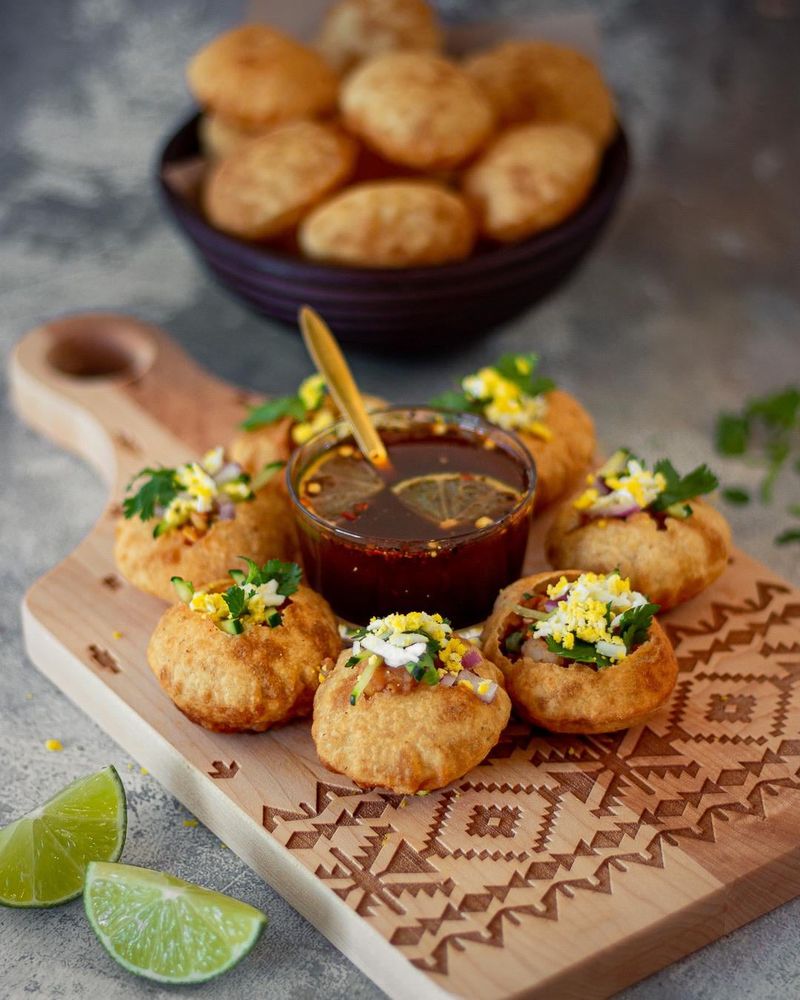
Fuchka, also known as Pani Puri in some regions, is a popular Bangladeshi street food that offers a burst of spicy and tangy flavors. It consists of crispy puris filled with a mixture of spicy tamarind water, chickpeas, potatoes, and spices. Fuchka is a favorite among locals and is often enjoyed as a communal snack. The preparation of Fuchka involves making the puris from semolina or wheat flour, which are deep-fried to achieve a crispy texture. The filling is a combination of boiled chickpeas and potatoes, enhanced with tamarind chutney and spices. The tamarind water adds a refreshing and spicy touch. Fuchka is more than just a snack; it’s an experience that brings people together. Its taste and interactive eating style make it a highlight of Bangladeshi street food culture, offering a taste of the region’s rich culinary heritage.
15. Algerian Mahjouba
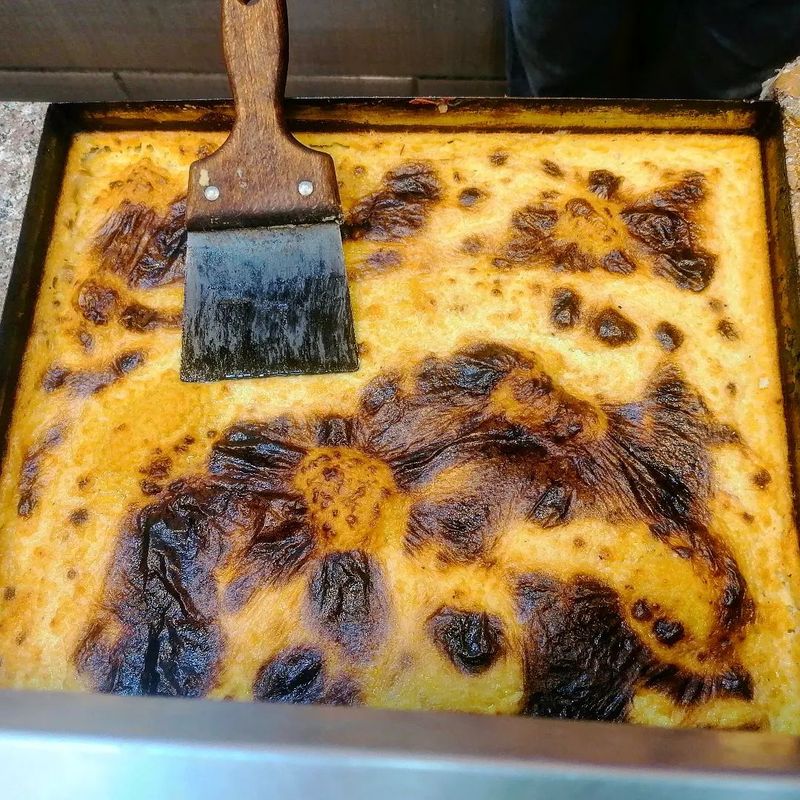
Mahjouba is a traditional Algerian street food, known for its savory filling and flaky texture. It consists of a flatbread stuffed with a mixture of tomatoes, onions, and spices, cooked until golden brown. Mahjouba is enjoyed as a quick snack or light meal, often served with harissa or olive oil. The preparation involves making a soft dough from semolina and water, which is filled with the tomato and onion mixture. The filled dough is then folded and cooked on a griddle until crisp and golden. This process requires skill to achieve the right balance of flavors and textures. Mahjouba is a staple in Algerian street markets, offering a taste of homemade comfort in a convenient form. Its rich flavor and satisfying texture make it a favorite among locals and visitors, reflecting Algeria’s culinary traditions and influences.
16. Singaporean Kaya Toast
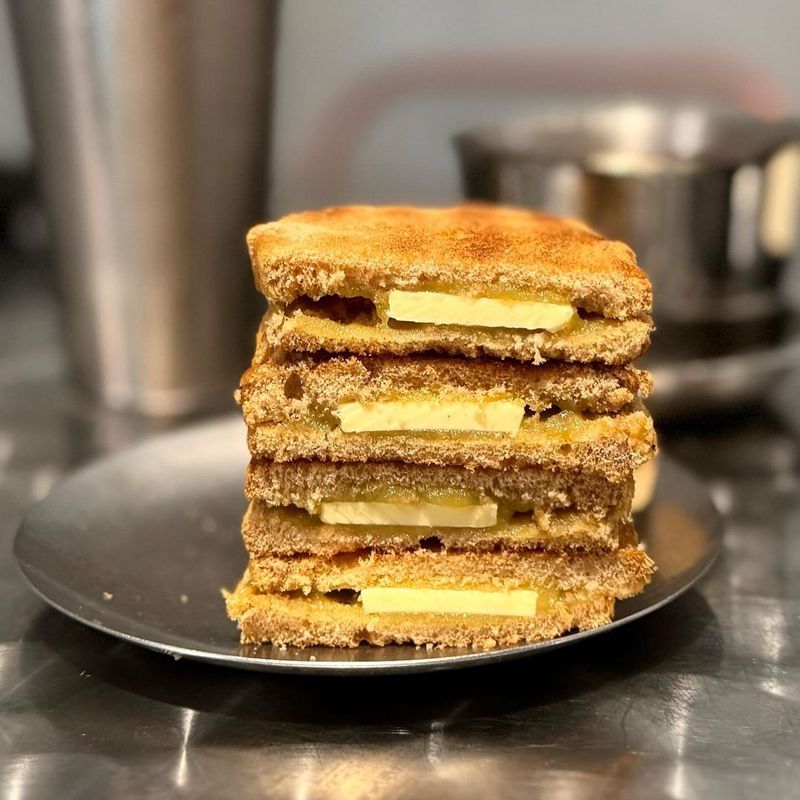
Kaya Toast is a quintessential Singaporean breakfast dish, often enjoyed as a street food snack. It consists of toasted bread spread with kaya, a coconut jam flavored with pandan leaves, and butter. It’s typically served with soft-boiled eggs and soy sauce, making a sweet and savory combination. The preparation of Kaya Toast involves toasting the bread until crispy, then spreading it with kaya and butter while still warm. The soft-boiled eggs are served on the side, allowing diners to dip the toast or mix it with soy sauce for added flavor. Kaya Toast is more than just a snack; it’s a cultural icon that represents Singapore’s rich culinary heritage. Its unique taste and simple preparation make it a beloved choice among locals and tourists, offering a delicious start to the day.
17. Tunisian Brik
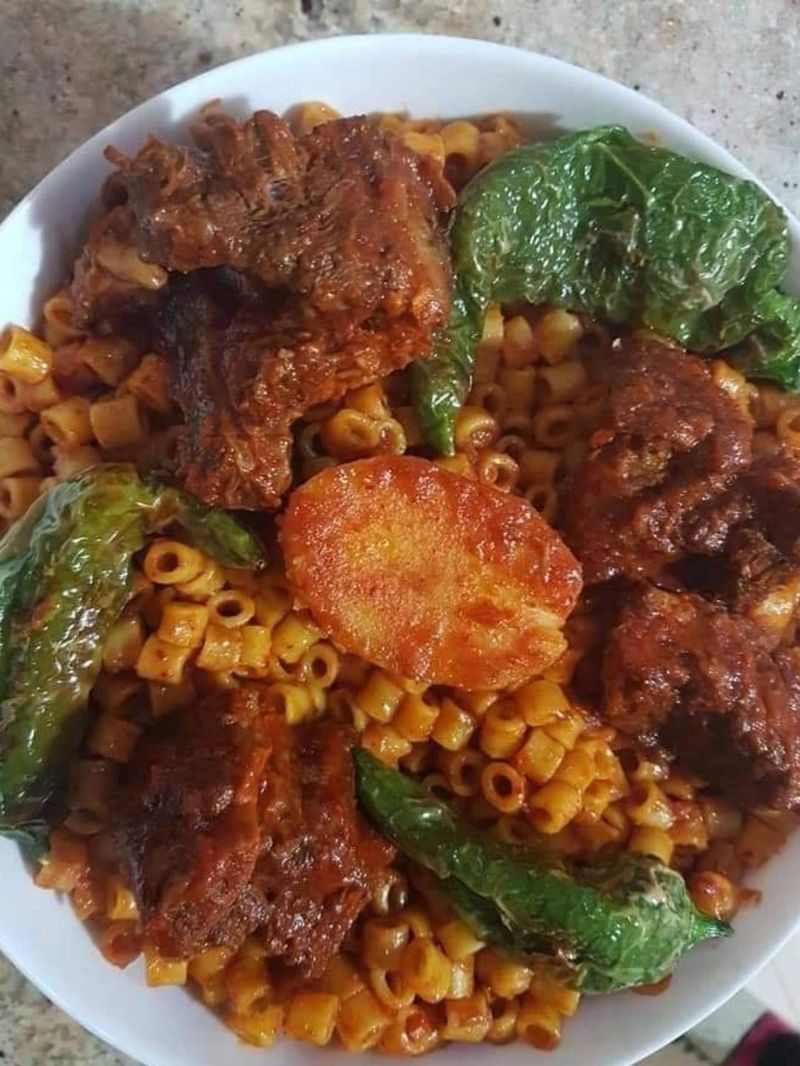
Brik is a traditional Tunisian street food known for its crispy texture and savory filling. It consists of a thin pastry filled with ingredients like egg, tuna, and spices, then deep-fried. Brik is often enjoyed as a quick snack or light meal. The preparation of Brik involves carefully folding the pastry around the filling to make a pocket. It’s then fried in hot oil until crispy and golden. The combination of the flaky pastry and rich filling offers a satisfying taste that’s both crunchy and savory. Brik’s popularity extends beyond street markets, reflecting its appeal and versatility. Whether enjoyed on its own or with a side of salad or harissa, Brik provides a taste of Tunisian culinary traditions, offering a delightful and satisfying snack.
18. Malaysian Roti Canai
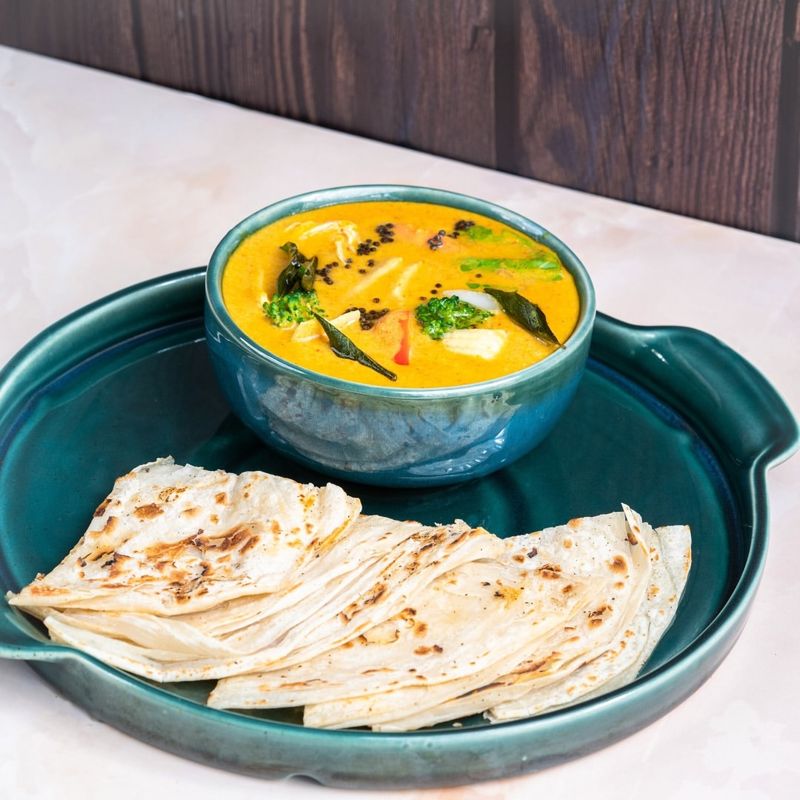
Roti Canai is a staple Malaysian street food, known for its flaky texture and versatility. This flatbread is made from flour, water, and ghee, and is skillfully stretched and folded before being cooked on a hot griddle. Roti Canai is typically served with curry sauce or dhal, offering a savory and flavorful experience. The preparation of Roti Canai requires skill and practice to achieve the right balance of crispiness and softness. The dough is stretched, folded, and cooked until golden brown, resulting in a flaky texture that’s hard to resist. The accompanying curry sauce adds a spicy and aromatic touch. Roti Canai is not just a dish; it’s a reflection of Malaysia’s diverse culinary influences. Its rich taste and simple preparation make it a favorite among locals and visitors, capturing the essence of Malaysian street food culture.
